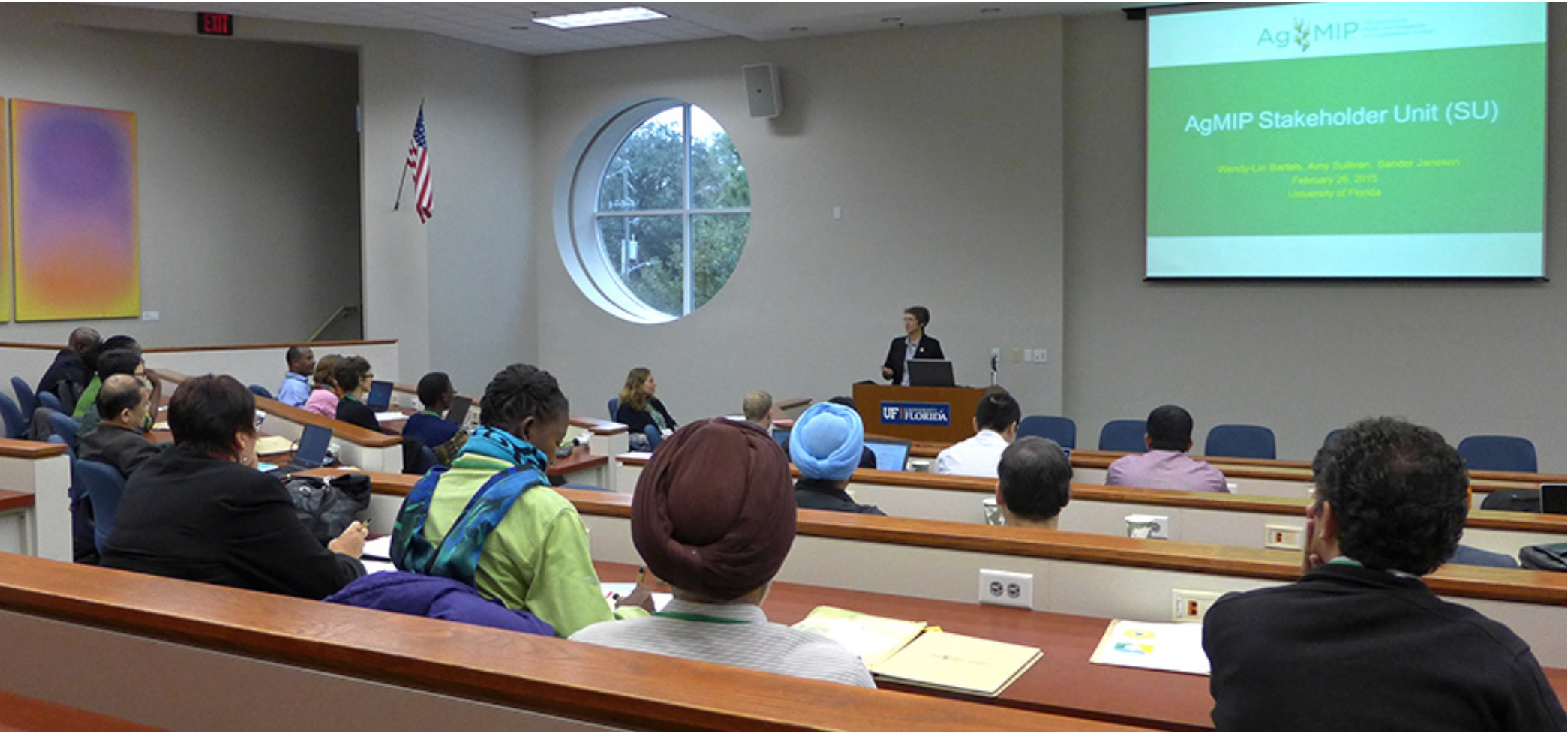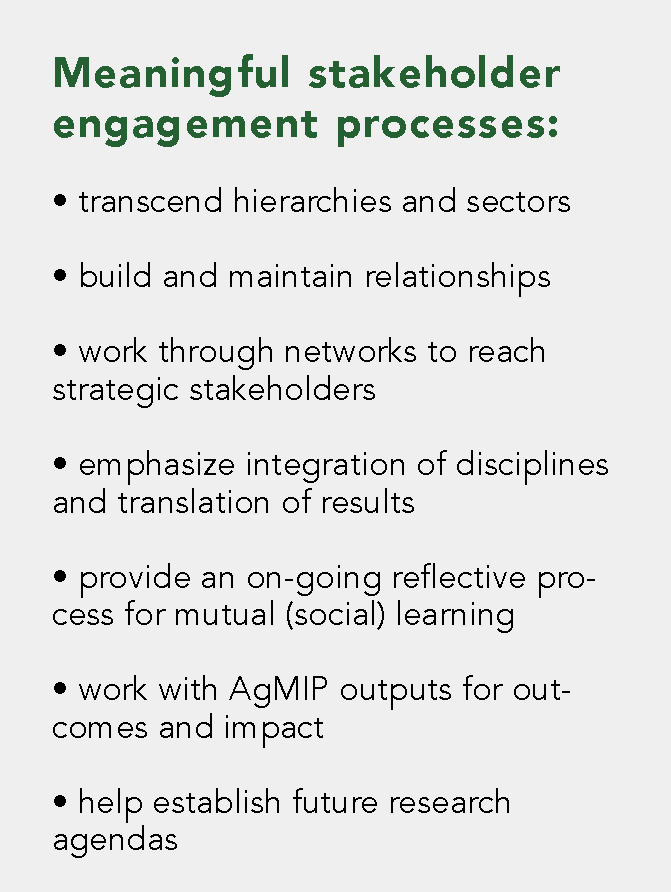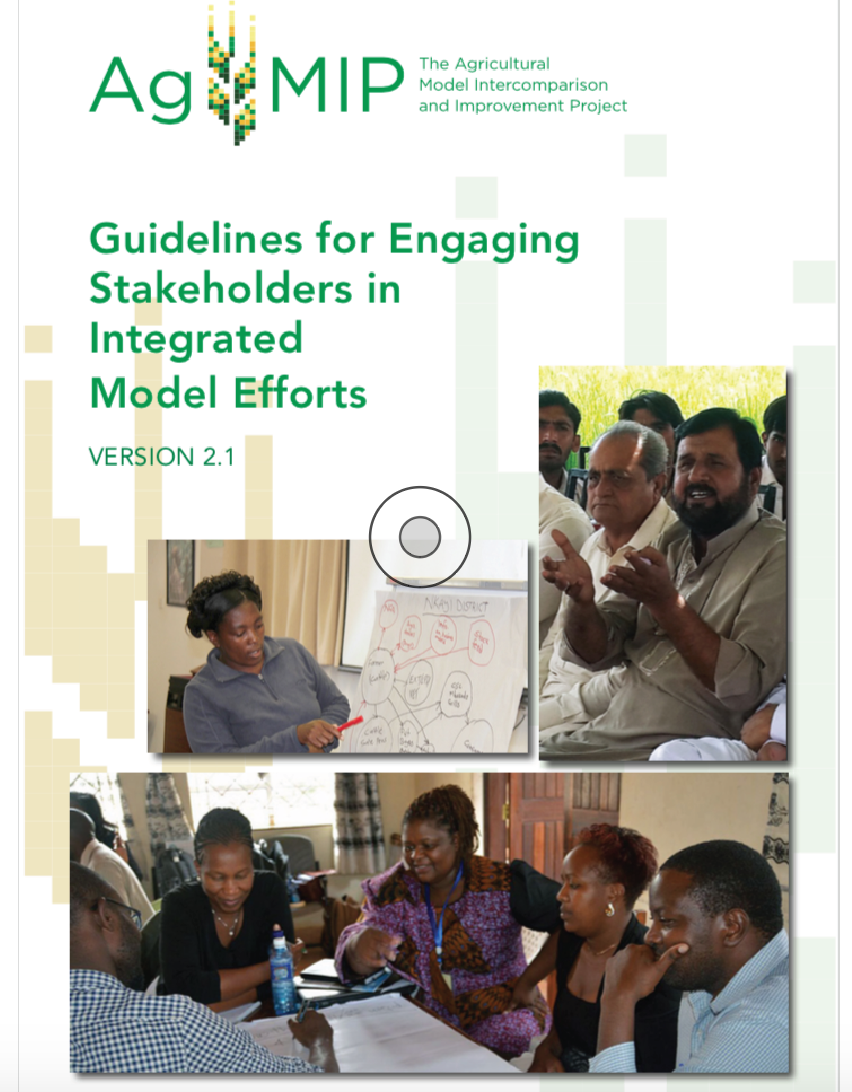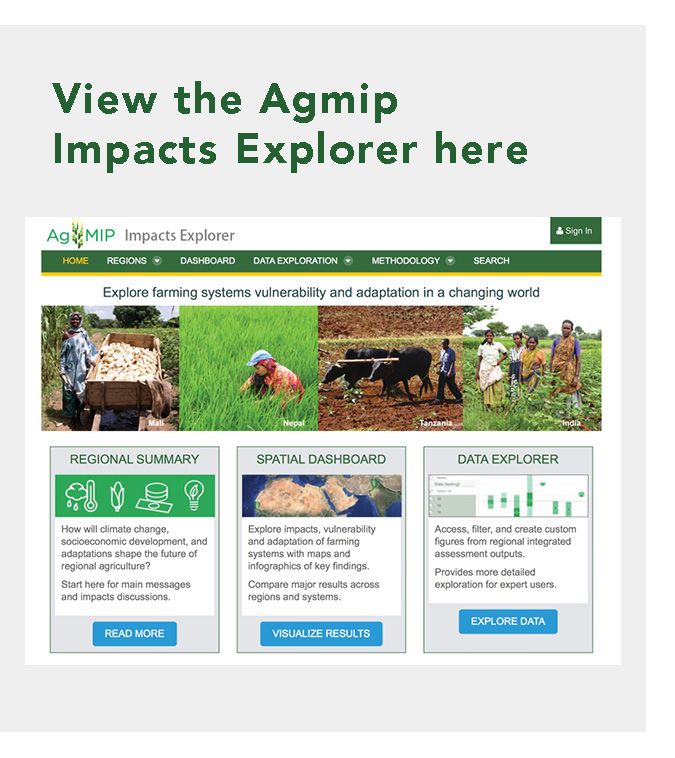Stakeholder Engagement and Decision Support

The AgMIP Stakeholder Unit (SU)
The SU was created to help ensure that the scientific outputs from Regional Research Teams (RRTs) are well-positioned for uptake by a wide range of next users and end users, including through the development of an “Impacts Explorer”. The SU works with each team through a designated Stakeholder Liaison (SL) who develops and implements stakeholder engagement processes. The SU aims to strengthen capacity within RRTs and AgMIP leadership to design and conduct demand-driven research.
The Stakeholder Liaison (SL)
The role of the SL is to develop interactive spaces that help build meaningful relationships among scientists and stakeholders so that AgMIP results and their applications can be translated effectively and explored collaboratively. SLs work equally as closely with RRT scientists (information supply side) and stakeholders (information demand side). SLs are responsible for collecting specific feedback from stakeholders related to their needs and requests for new types of research outputs. SLs work with modellers to translate and package AgMIP outputs in ways that resonate with what stakeholders care about. However, SLs are not tasked with being science messengers, nor are they expected to convince audiences that climate change is real, or that AgMIP modelling and research results are useful for decision making. Assessing the factors that impact success and failure of uptake is a critical component of engagement. Therefore, SLs document how the design of scientist-stakeholder interaction processes affects dialog and outcomes. Furthermore, SLs explore how modelling changes in response to stakeholder input. Emphasis is placed on collecting success stories and instances of failure (non-use of information) as well suggestions for future climate research development, packaging and roll-out.
Major Stakeholder Liaison Activities
- Consolidate Phase 1 science outputs
- Contribute to revised RRT Phase 2 work plans
- Design, implement, and evaluate stakeholder activities
- Share lessons learned and insights within an AgMIP Community of Practice (CoP) – A space for reflection, learning & documentation of effective engagement practice
The SU and SLs support RRTs to
- Set goals and targets to be reached through stakeholder engagement.
- Diagnose pathways for getting from outputs (models) to outcomes (models informing strategic decisions).
- Plan for strategic engagement and prepare to be opportunistic
- Engage Stakeholders to determine THEIR priorities and preferences in information needs.
- Utilize results to inform assessments and communication/outreach
- Facilitate, document and share learning via AgMIP platform


Guidelines for Engagement
 Simply identifying a potential use, or hoping that information might be useful, is not enough to ensure usability – Dilling and Lemos, 2011
Simply identifying a potential use, or hoping that information might be useful, is not enough to ensure usability – Dilling and Lemos, 2011
Studies indicate that conventional pipeline-style information delivery approaches fail to inform complex decisions. Making science usable and relevant requires a structured process for on-going stakeholder feedback & modification. Iterative processes must be designed to create learning environments where scientists and practitioners can exchange knowledge and build dialog. By clearly understanding stakeholder needs and learning together, teams can respond and modify AgMIP research outputs, making them more relevant to the target audiences engaged. By involving stakeholders in an on-going journey, teams can move beyond informing/consulting to building partnerships and empowering user groups.
 Anticipated Impacts
Anticipated Impacts
- AgMIP contributes to evidence based decision making at continent, region, country and local levels by generating more relevant and robust projections of climate impacts on agricultural systems—of use to decision makers.
- AgMIP’s Stakeholder Unit has enhanced the willingness and ability of leadership and teams to plan and implement projects with users’ needs and frame of reference at the forefront–scientists build models that generate outputs or results of use to multiple stakeholders.
Impacts Explorer
Whereas the overall objective of the SU is to enhance the use and usability of the scientific outputs from the RRTs for a wide range of users, the focus in the development of the Impacts Explorer is to determine how an interactive ICT tool can support this objective. Scientific outputs can be distributed and shared in many ways, depending on the type of output and the audience. The Impacts Explorer will support users in exploring the quantitative, spatio-temporal data produced by the RRTs, including the qualitative results leading to key messages, and contextual information required for interpretation.
The activities in the Impact Explorer development process focus on determining the data and functionality the tool should offer, developing prototypes for evaluation, and identifying any issues that may affect the successful use of the tool in the decision making process. The Impact Explorer will be developed in a user centered and iterative process, in which stakeholders and users are involved continuously.


